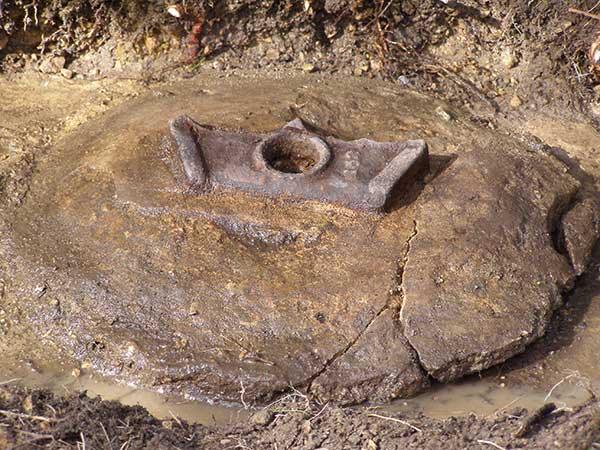Cumberland County has played host to Prisoners of War at times during its history, most notably during the Revolutionary War, the Civil War, and during World War II.
During the Revolutionary War captured British soldiers were kept at Washingtonburg (Carlisle Barracks). In particular, a contingent of Hessian mercenaries hired by the British and captured by the Americans were imprisoned at Washingtonburg in 1777. While there, they made improvements to the buildings at the facility, particularly the building known as the Hessian Guardhouse, originally built as an armory.
During the Confederate Invasion of the valley in June 1863, a few Rebel prisoners were taken during some of the minor skirmishes that occurred in the County as the troops moved through the valley before moving on to Gettysburg. Another Cumberland County connection to POWs also occurred during the Civil War when Union prisoners from the county were kept at the infamous Andersonville Prison in Georgia.
During WWII, there was no place to keep German and Italian prisoners from North Africa and Europe, so a plan was devised to intern prisoners in the United States, at military facilities and recently closed Civilian Conservation Corps camps throughout the country. In Cumberland County this occurred at Carlisle Barracks and at New Cumberland. A third site near Pine Grove Furnace at the Pine Grove CCC Camp, was also to be used in this manner. However, the military also had a need to interrogate prisoners who potentially had information that could assist in the prosecution of the war. The initial locations in Virginia and California were not able to handle the volume so a third site was selected at Pine Grove.
The Pine Grove Furnace Prisoner of War Interrogation Camp was opened in May of 1943 following extensive renovation of the former CCC facility by men from the Letterkenny Army Depot in Franklin County. During the course of the war, more than 7,500 German prisoners were interrogated at the site.
The Pine Grove Camp was a triage center. The focus of interrogation was to sort the prisoners into eight groups. The first division was to separate Naval personnel from other military personnel. Within those two groups the next division was to separate the officers from the other men. The resulting four groups were then evaluated further to separate pro-Nazi prisoners from prisoners with more neutral leanings regarding German leadership. Once these determinations were made, unless it was felt there was more information that could be gleaned, the prisoners were sent to an internment camp somewhere else in the country for the duration of the war. Individual camps were set up to house prisoners who were classified in each of the eight classifications. Prisoners who potentially had additional information were sent to Ft. Hunt in Virginia for more intense scrutiny.
Near the end of the war, as the war in Europe drew to a close, plans were made to use the facility to interrogate Japanese prisoners. The main camp was divided in half. An additional mess hall and latrine facilities were created and an initial contingent of 161 Japanese prisoners was brought to the camp in August of 1945. However, the resulting rapid end of the war brought about by the use of the atomic bomb made the need for this plan to not be implemented further. The initial contingent of prisoners remained at Pine Grove until plans could be made to return them to Japan.
The camp closed on November 28, 1945 along with other POW prison facilities in the county around that same time. The last prisoners to leave were nine “trusties” who had been at the camp for much of its time of operation. Each of these men had a particular skill that was useful to the running of the camp and therefore was not sent to an internment camp after his interrogation had been completed.

